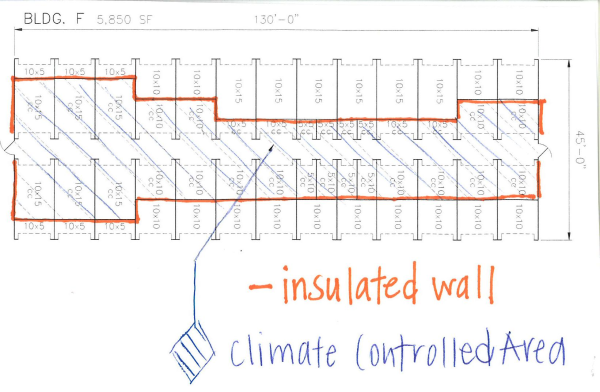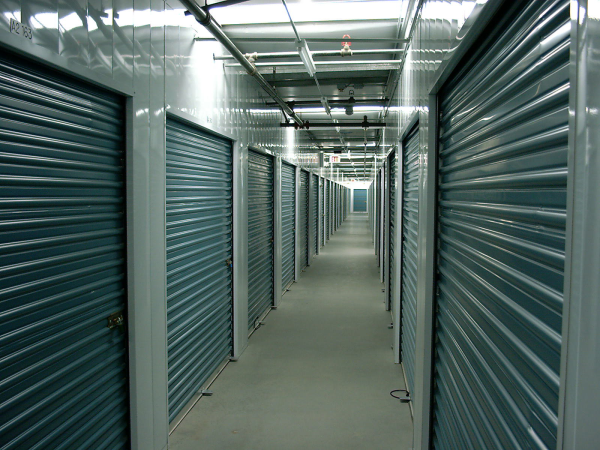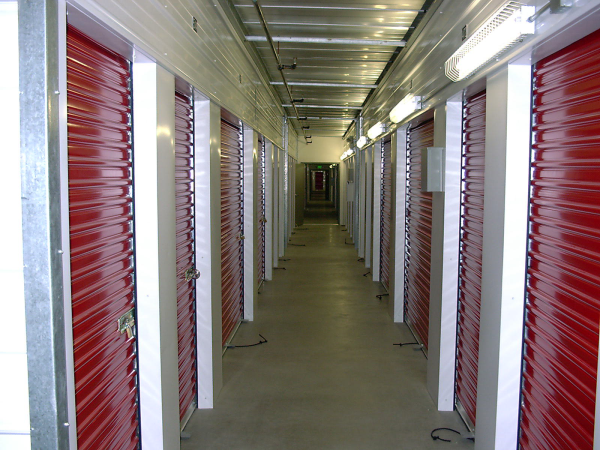Is the Development of Climate Control Storage Really “Heating Up”?

Climate control storage appeals to customers wanting to preserve sensitive and valuable contents. These customers look for self storage facilities that monitor and control humidity and temperature settings. Climate control storage commands higher rental rates than regular self storage does. As developers and existing owners look for ways to increase their return on investment, offering a climate-controlled space is one way to generate significant rental income.
Climate Control “Rules of Thumb”
1.) Units need to be planned to access via corridor. Metal buildings, by nature, are NOT air tight at exterior walls. When you consider the fact that most exterior walls have long rows of metal doors, the problem with containing your heat or cooling grows exponentially. Plan a building that is at least 40’0” wide (preferably wider!) – and design your building with a corridor system and an interior wall that can be fully insulated.

2.) Work with an Architect and Mechanical Engineer to determine the amount of insulation required. Remember that this is non-occupied space and that the industry standard range for Climate Control Storage is between 50 and 90 degrees.
3.) Most Climate Control Storage in the United States utilizes a 6” Roof Insulation (R19) and a 4” Wall Insulation (R13). HOWEVER, as of July 2013, IECC (International Energy Conservation Council) has upped the ante with many projects, requiring more insulation to better preserve energy. When budgeting for your climate control construction, include a contingency in case IECC affects your project.

4.) Make sure to consider travel distance in corridors. Travel distance is typically no more than 75 feet, and the term “travel distance” refers to how far a customer needs to walk to get to their unit from the building’s entrance. If a planned building is sketched with 150 feet of travel distance, for example, you would want to add another entrance in the middle so that customers only need to walk up to 75 feet.
5.) Climate Control Storage is typically between $9 - $13 per square foot for building components, roll-up doors, corridor systems and labor to install.

When Planning Climate Control Storage, Do Keep These Key Points in Mind
Climate control storage works best with a corridor system, giving customers access to their units from inside the building. This is in contrast to the typical self storage building with metal roll up doors along the outside of the building – a building layout that is difficult to insulate.
An architect can help you determine how much insulation your building requires. IECC (International Energy Conservation Council) also sets standards that must be met related to building insulation and energy efficiency.
Buildings with corridors are ideally designed with a travel distance of 75 feet; this is the maximum distance a customer would need to walk to get to their unit from the building’s entrance. Construction of climate control storage generally costs between $9 - $13 per square foot.
Adding climate controlled buildings to your self storage facility can bring you new customers and higher rental income. Tenants usually pay 15 to 35 percent more for climate controlled units compared to regular units.

